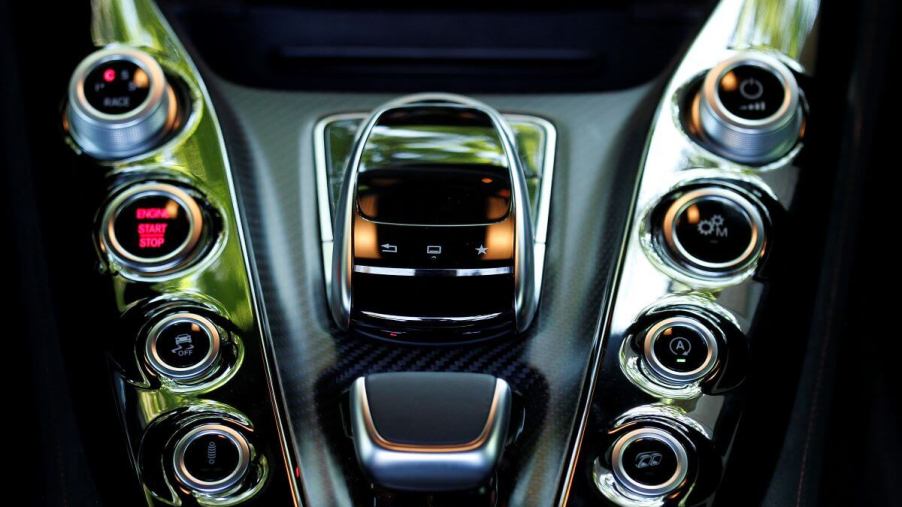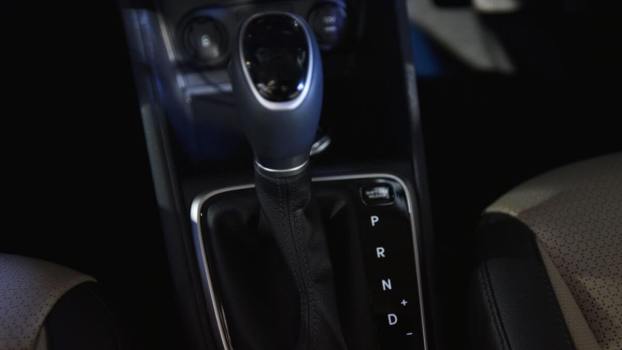
What’s the Difference Between Driving Modes and Transmission Gears?
There exist many ways to alter the driving experience and performance of modern cars without the need to break out a tool set or upgrade its kit. One of the most simplistic ways is to change gears, either through a manual or automatic transmission. For the better part of the automotive industry’s first century, this was the only means to quickly adapt a car’s performance to outside conditions.
However, more recently, the use of driving modes, such as eco, comfort, off-road, or sport, is now fitted to most modern cars, trucks, and SUVs. So, how are gear changes different from driving modes, and what do all those driving modes do?
Manual vs. automatic transmissions
A car’s engine transfers its power to the wheels through a transmission, also known as a gearbox. According to J.D. Power, the transmission uses a series of gears that can alter speed and ensure the correct power output from the engine is delivered based on driving needs. Though there are various types of manual and automatic transmissions, they essentially boil down to whether the transmission needs input from the driver to change gears.
As the name implies, a manual transmission requires the driver to select between available gears. This is accomplished by using a clutch pedal. When the pedal is depressed, the transmission is disengaged from the engine and allows the driver to use a gear lever to select a different gear.
An automatic transmission uses sensors to detect when a gear change is required. The transmission then automatically disconnects from the engine momentarily, and a new gear is selected, a process usually undertaken by a torque converter without requiring any driver input.
There are various types of automatic transmissions, some of which blend the processes of automatic and manual operation. One such example is a Tiptronic transmission, which allows drivers to switch between automatic and manual shifting. Gear changes are typically undertaken by paddle shifters with a Tiptronic, and they do not require a clutch pedal.
Another popular form of an automatic transmission is a continuously variable transmission or CVT. A CVT uses pulleys instead of fixed gears. Other examples of automatic transmissions include a dual-clutch automatic or a DSG (direct-shift gearbox).
Driving modes and how they work
Many new cars now have driving modes often labeled with monikers like eco, sport, or comfort. According to CarBuzz, these driving modes alter the performance of the transmission, engine, or suspension to emphasize a particular type of driving need.
For instance, eco mode can help drivers stretch their fuel economy. This is accomplished by limiting the engine’s power output and changing the transmission’s performance to increase fuel efficiency.
Conversely, sport modes can increase the engine’s power output and provide more rapid throttle responses or faster gear changes for models equipped with automatic transmissions. The suspension may also change to a stiffer, more athletic setting. A heavier steering feel is also incorporated into the drive mode for improved performance.
Comfort mode, also often labeled as “normal,” balances economical and sporty driving modes. Thus, drivers can enjoy improved fuel economy over driving solely in sport mode but still have quicker throttle and transmission responses in all driving situations. Compared to sport mode, the suspension is also more softly sprung to deliver a more supple ride quality.
Other common driving modes meant for all-terrain journeys can also typically be found on SUVs and trucks. Some are simply labeled “all-terrain” or “off-road,” but some models further specify their uses with modes for sandy, rocky, or snowy surfaces.
For instance, a snow/ice mode usually tamps throttle and braking responses for maneuvering along slippery surfaces. A rock mode, meanwhile, typically keeps the transmission in its lower gears to maximize torque for traversing over craggy terrain.




